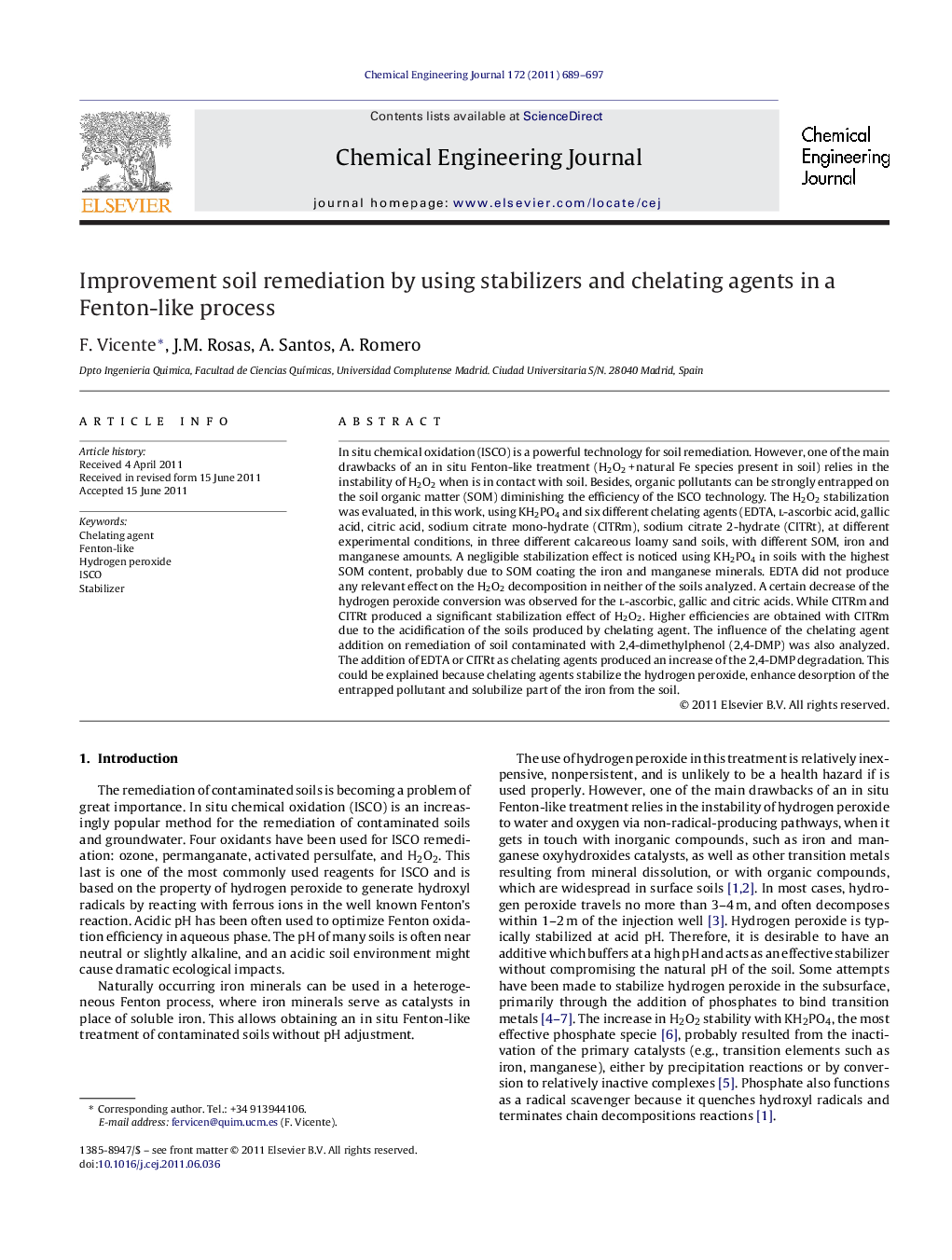| Article ID | Journal | Published Year | Pages | File Type |
|---|---|---|---|---|
| 150767 | Chemical Engineering Journal | 2011 | 9 Pages |
In situ chemical oxidation (ISCO) is a powerful technology for soil remediation. However, one of the main drawbacks of an in situ Fenton-like treatment (H2O2 + natural Fe species present in soil) relies in the instability of H2O2 when is in contact with soil. Besides, organic pollutants can be strongly entrapped on the soil organic matter (SOM) diminishing the efficiency of the ISCO technology. The H2O2 stabilization was evaluated, in this work, using KH2PO4 and six different chelating agents (EDTA, l-ascorbic acid, gallic acid, citric acid, sodium citrate mono-hydrate (CITRm), sodium citrate 2-hydrate (CITRt), at different experimental conditions, in three different calcareous loamy sand soils, with different SOM, iron and manganese amounts. A negligible stabilization effect is noticed using KH2PO4 in soils with the highest SOM content, probably due to SOM coating the iron and manganese minerals. EDTA did not produce any relevant effect on the H2O2 decomposition in neither of the soils analyzed. A certain decrease of the hydrogen peroxide conversion was observed for the l-ascorbic, gallic and citric acids. While CITRm and CITRt produced a significant stabilization effect of H2O2. Higher efficiencies are obtained with CITRm due to the acidification of the soils produced by chelating agent. The influence of the chelating agent addition on remediation of soil contaminated with 2,4-dimethylphenol (2,4-DMP) was also analyzed. The addition of EDTA or CITRt as chelating agents produced an increase of the 2,4-DMP degradation. This could be explained because chelating agents stabilize the hydrogen peroxide, enhance desorption of the entrapped pollutant and solubilize part of the iron from the soil.
• H2O2 stability was improved in soils with high soil organic matter content using KH2PO4 and six different chelating agents. • H2O2 stability in these soils is remarkably influenced by the pH decrease. • The highest stabilization effect of the H2O2 was obtained by the citric acid. • To avoid the negative ecological impact in soils caused by the decrease of pH, two sodium salts derived from the citric acid, which maintains the natural pH of the soil decreased H2O2 decomposition: citrate monobasic and citrate tribasic. • The remediation of the contaminated soil with 2,4-dimethylphenol by Fenton-like reaction showed an increase of the pollutant degradation related with the addition of EDTA or citrate tribasic as chelating agent. • The enhancement in Fenton-like is due to the desorption of the entrapped pollutant produced by the addition of the chelating agent and its capability to complex natural metals of the soil.
